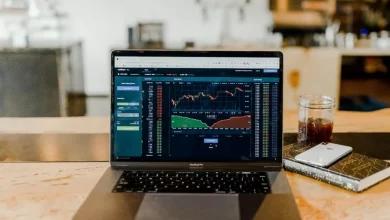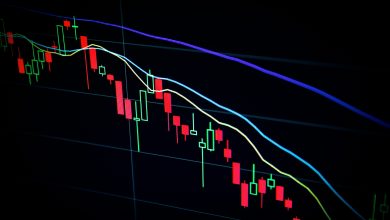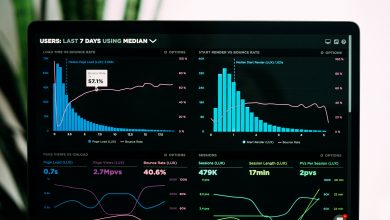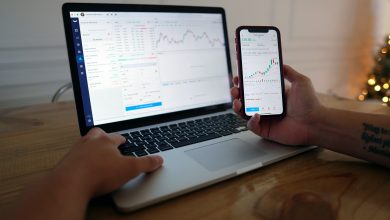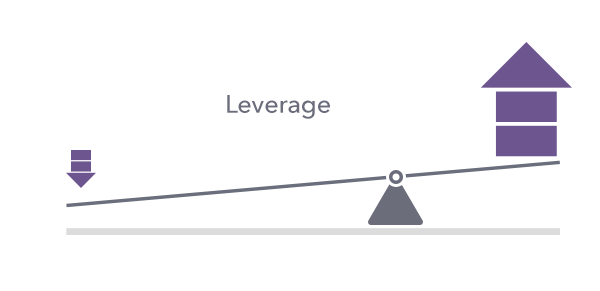
Leverage is an important element of CFD trading, and it may be a very useful tool for a trader. You may use it to profit from very modest price fluctuations, to ‘push’ your portfolio for more exposure, or to stretch your money further. This article gives an in-depth insight into what leverage is, how it works, how to manage your risk, and when it’s appropriate to use it – including its pros and cons.
WHAT IS LEVERAGE TRADING?
Leverage, as described in physics, is a mechanical advantage that occurs when a little input force is amplified to produce a larger output. The same idea applies to financial leverage. However, in this situation, it increases an investor’s purchasing power in the financial market.
Leverage trading, which is also referred to as margin trading, is when you utilize borrowed money to achieve a significantly larger possible return on your trading investment. This enables you to take on positions that are considerably greater than what your initial money would allow.
The aim is to utilize that extra cash to purchase more contracts of an asset, with the expectation that the position’s returns will outperform the borrowing costs. Leverage, on the other hand, can enhance possible profits while simultaneously increasing risk exposure. As a result, it is mostly used by experienced traders.
The amount of debt a firm utilizes to increase its finance capital-intensive expenditures as well as its asset base is sometimes referred to as leverage. Instead of issuing new shares to obtain cash, the firm may utilize debt to buy more assets and enhance its operations.
SOME IMPORTANT LEVERAGE TRADING TERMS YOU SHOULD KNOW:
- Coverage: This is the proportion of your trading account’s net balance to the leveraged amount.
- Margin: This is the total amount set aside by your broker so as to cover for any potential losses if the deal turns sour. It is one of the most important aspects of leveraged trading.
- Buying power: This is the total amount of money available in your account to buy assets (including leverage).
- Margin calls: If the balance in your trading account drops below a predetermined minimum threshold, your financial intermediary or broker will make a margin call. It’s essentially a notice that your position is subject to a degree of risk that the broker cannot tolerate. To achieve the minimum necessary amount, you’ll have to add additional cash to your account. Alternatively, you might end your trading position and accept the losses you’ve accumulated.
- Open position: If you’ve initiated a trade but haven’t yet closed the trade with an opposing transaction, you’ve got an open position. Assume you possess 1,000 eBay stock shares. This indicates that you have an open position in eBay stocks that will remain open until you end it.
- Close position: This can be simply explained as the value of your investment at the point when it was closed. Let’s say you started a position at $40 and it went up to $55. You close the trading position at $55, netting a $15 profit on the transaction.
- Stop-loss: This helps minimize a trade’s potential losses by terminating a position automatically based on specific conditions. If the transaction falls below a certain price level, the stop-loss is triggered, which immediately terminates the position to prevent additional losses.
LEVERAGE TRADING – HOW DOES IT WORK?
Your broker can help you trade with leverage. Consider it like taking out a loan to buy a house. You have your starting cash, and the broker covers the majority of the total buying price of the position. Any difference between the price you paid for the asset when you bought it (opening price) and the price you paid when you sold it (closing price) is resolved in your trading portfolio balance.
If you used a lot of leverage in your trades and the asset increased a lot, the money you owe the broker is deducted from your earnings on that deal. If on the other side, the transaction went wrong and you ended the position with a loss, the sum due is deducted from the balance in your account.
As a result, not every trader has access to leverage trading capabilities. A broker’s willingness to lend money is determined by a variety of circumstances. These factors include the total number of leverage the trader need and the jurisdiction’s current online trading rules.
HOW DOES LEVERAGE RATIO WORK?
The leverage ratio is always expressed as a ratio of total assets to total equity. The total sum of your capital or equity and your loan amount or debt is referred to as total assets. Equity, also known as capital, is the money you put into your trading account. The financial leverage ratio formula is as follows:
Total Assets / Equity = (Debt + Equity) / Equity = Leverage ratio
Traders can employ leverage that is up to 100:1 or even higher depending on the brokers used as we have a lot of high leverage brokers out there. At least, that’s how it works in the currency markets. This implies you may leverage your trades up to 100 times in this case.
Let’s suppose your equity or capital is 3,000 dollars. If the broker you are using allowed 100:1 leverage, you may open a market position worth $300,000 ($3,000 x 100) with only $3,000 in your account. For this position, it means your broker will technically enable you to borrow a sum of $297,000 in addition to your initial capital. That is any loss or profit will be multiplied by a factor of 100.
Negative Balance Protection is offered by some brokers. In the case of a loss, this effectively prevents you from trading just before your account becomes negative. You could find yourself owing the broker some money if you don’t use this protection function. This might happen if the trading position’s loss exceeds the amount you originally invested.
TYPES OF LEVERAGED PRODUCT
The bulk of leveraged trading is done through derivatives, which means you trade an instrument whose value is determined by the underlying asset price instead of owning the financial asset.
The following are the key leveraged products:
- Betting on spreads (available only in UK ): A wager on the market movement directions, with greater profit if you predicted correctly the direction the market moves towards and more loss if it travels in the opposite direction.
- Contracts for difference (CFDs): A contract with a provider to swap the price difference between the opening and closing time of a financial product.
Some exchange-traded funds(ETFs), futures leverage, and leverage options are some of the other leveraged instruments available. They all can either increase profit or loss, despite the fact that they function in various ways.
AVAILABLE MARKETS TO USE LEVERAGE?
The following are some of the financial trading markets where leverage can be used:
- Indices: A numerical representation of the productivity of a collection of assets from a certain exchange, location, region, or industry is known as an index. Indices are also traded through instruments that mimic their price fluctuations, such as CFD trading and ETFs because they are not real assets. Leverage in share market and leverage in stock market are the most common examples of this kind of indices account leverage trading.
- Forex: The buying and selling of foreign currencies for the sake of making a profit are known as a foreign exchange which is commonly called Forex. It is the world’s most actively traded financial market. Because forex trading involves such tiny swings, many people choose to trade with leverage in forex.
- Cryptocurrencies: They are digital currencies that may be traded just like FX but are not regulated by governments or banks which simply means they are decentralized. Leveraged products help traders to invest in big Cryptocurrencies like Ethereum and Bitcoin without risking a large amount of money. One of the best leverage brokers used by cryptocurrency traders to leverage crypto is Binance. Leverage in Binance is an important trading model that fuels the Binance margin trading features on the Binance platform.
EXERCISING LEVERAGE IN TRADING
We saw how a 100:1 leverage ratio with a starting capital investment of $3,000 may enable you to possess a total of $300,000 worth of an asset or currency in the previous example. Let’s start at the beginning and evaluate how much profit or loss you can earn using financial leverage vs not using it.
Assume you decide to purchase the asset or currency for $10 per unit. The price rises to $11.00 within few hours after opening the position, and you close the trade. What would the outcome of your trading deal be?
Without using leverage: The asset increased by $1.00, and you purchased 200 shares for $4,000. In this example, your total profit is $200 ($1 x 200).
Using leverage: You used a 100:1 leverage on your trading investment, which implies you purchased 20,000 shares. The deal generates a total profit of $20,000 ($1.00 x 20,000).
That’s only a taste of how much money you can generate with the same $4,000 investment. This is, of course, simply a broad explanation of how to leverage trading simply works. Depending on the market and the sort of asset being exchanged, the exact process will vary.
WHAT’S THE DIFFERENCE BETWEEN MARGIN AND LEVERAGE?
Although leverage and margin are closely related, yet, they are two different things. Taking on debt to increase your purchasing power is referred to as financial leverage. As an investor, you do this simply because you think the security or asset you’re purchasing will provide a higher profit for you than the debt’s original cost.
The margin, on the other hand, is the amount of money required to establish and sustain leverage. It’s similar to putting down a deposit on a house before you can get a loan. A margin call will occur if your account balance drops below a specified amount during the deal.
What factors influence the amount of leverage you may obtain with your margin account? Your trading account balance, the securities you wish to trade, the broker’s leverage policy, the broker’s margin leverage ratio, and your trading experience are all on the list.
THE ADVANTAGES OF USING LEVERAGE
It may be a very effective trading instrument if you have a solid understanding of how leveraged trading works. Here are some of the advantages:
- The market is being shorted: Using leveraged instruments to predict market movements allows you to profit from both the bullish and bearish markets – this is referred to as going short on a market.
- Opportunities for gearing: Leverage can help you free up some money that can be put to better use elsewhere. Gearing refers to the capacity to raise the quantity of money available for investment.
- Profits multiplied: To make the same profit as a traditional transaction, you just need to put down a fraction of the deal’s value. Margin may boost your earnings on successful trades – but also your losses on bad transactions because profits are computed using the whole amount of your position.
- Dealing is available around the clock: Though financial markets trading hours vary per market, many markets, such as major indices, forex, and cryptocurrency exchanges, are open 24 hours a day, seven days a week.
THE DISADVANTAGES OF USING LEVERAGE.
Though CFDs and some other leveraged products offer a number of advantages to traders, it’s also vital to recognize the drawbacks of utilizing them. Here are some things to think about:
- Losses are magnified: Because your initial expenditure is considerably lower than traditional transactions, it’s easy to overlook how much money you’re putting at risk. As a result, you should constantly think about your transaction in terms of its entire worth and possible downside, and take precautions to minimize your risk.
- There are no shareholder benefits: When you trade using leverage, you forego the advantage of really owning the asset. Using leveraged instruments, for example, can have an impact on your dividend payments. Instead of getting a dividend, the money is generally added to or removed from your account, based on whether you’re long or short in your position.
- It’s all about the margin: If your trade position goes against you, your supplier could ask you to put up more money so as to keep your trading position open. This is referred to as a margin call, and to minimize your overall exposure, you’ll have to either put more money or leave holdings.
- Charges for funding: You are basically being loaned the funds to open the full trading position at the cost of your investment when you use leverage. A modest fee will be levied if you wish to keep your trading position open overnight to offset the costs.
MAKING THE MOST OUT OF TRADING WHILE USING LEVERAGE
Because of the dangers, leverage trading is best suited to experienced traders. Nevertheless, if you want to give it a go, here are some pointers:
- Before investing in any trades, conduct a thorough analysis: It may seem self-evident, but when it comes to leverage trading, there is no space for guessing. Before establishing a trade, use a combination of lagging and leading technical indicators to assess and check price movement.
- Stop-Loss Is Required: Placing a stop-loss order in all your open positions, regardless of your trading expertise, is the first practical action to reduce the hazards connected with leverage trading.
- Make sure you are aware of your financial situation.: Calculate the amount of loss you’re willing to take on a deal in light of your financial condition. Begin with lower leverage ratios and gradually build up, taking on only what you can comfortably manage.
- Create a profit-taking order: A take-profit order represents your offense while a stop-loss order represents your defense. When your leverage position reaches the profit objective you specify, this program automatically closes it out.
RISK MANAGEMENT AND LEVERAGE
Leveraged trading is dangerous since losses can surpass your initial investment, however, there are a number of risk-management strategies that can help you limit your losses, such as:
- Stops: If a price goes against you, putting a stop to your open trade might help you limit your losses. However, because markets change fast, it’s possible that your stop will not be activated at the price you’ve specified.
- Stops that are guaranteed: These function similarly to simple stops, except they will always fill to the precise amount you specify, even if gapping or slippage happens. However, there will be a modest surcharge to pay as an additional fee to standard transaction fees if your stop is activated.
- An account with low risk: These kinds of accounts can help protect your trades by ensuring that all of your trades have a guaranteed stop or are on markets that are naturally low-risk.
Stops are indeed the most popular approach to decrease leverage risk, but there are a variety of additional options, such as price alerts and limit orders.
IN CONCLUSION
Trading with leverage is said to be one of the most effective instruments accessible to traders and investors seeking big profits. However, like with any instrument, it is entirely dependent on the knowledge and competence of the person using it.
Financial leverage, in the right hands, may dramatically increase returns; yet, in the wrong hands, it can cause havoc and lead to a dreaded margin call.
In any case, being up to date on best practices is essential. You may gradually begin to experiment with trading with leverage on a demo account before starting on a variety of real financial products and build your own unique trading techniques.

